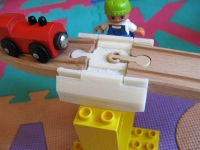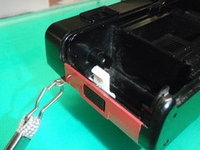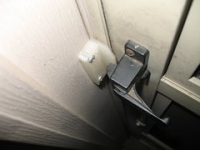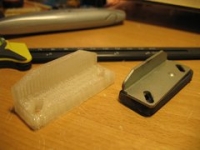[FIY] Fab It Yourself: Adapters & consumer lock-in
In the RepRap community, you can observe several interesting applications of domestic manufacturing.
A manufacturer will probably not make their product compatible with competing products. But what if you still want this? How cool would it be to mix anything together!
3D printable adapters allow you to combine two different systems, so what? While this looks like a childish example, the development of the availability of downloadable, adapters can have significant ramifications in industries where creating technological lock-in is common practice. Especially the dominant manufacturers in a market do this often. But since you’re legally allowed to make parts that mate with proprietary parts [1] this will require companies to focus on the real-value adding features instead of finding ways to reinforce technological dependence that is not rooted in the value of the product but the lack of interoperability. First movers of creating interoperability will create a benefit perceived by their customers that soon becomes the standard. Those who choose to follow because they didn’t see it coming will loose customers to the pioneers. Eventually, the whole industry is better of when competition is centered around real innovation and when customers have more choices. And if companies don’t offer the adapters themselves, the users of these products can more and more easily self-manufacture them. The question is, do you want it to be a deliberate choice (and as a bonus: a good long term value enhancing strategy) or not.
Being able to quickly combine different products’ modules is also a good way to stimulate user invention, with its beneficial societal effects [1]. Not to mention the environmental benefit of enabling reuse of parts from products with lost, broken or missing parts, which enabling self-repair by individuals. Of course sharing designs is important, but it only needs to take a few minutes, and enables you to get feedback or see other people improve your design to a new level! Thousands of objects are already shared in this way (mostly open source) on Thingiverse.com.
It is not uncommon for suppliers not to want to supply replacement parts: it cannibalizes on their sales of the complete products while it is frequently not a profitable business because the logistics are very unfavorable. The reality is: Suppliers usually don’t end up making money of of replacement parts. If they do it at all, it usually is to prevent damage to their reputation and brand value. Supplying small quantities of many different parts to many different destinations is expensive. Plus, you usually end up manufacturing many parts that will not be used, because it was hard to determine which ones will break and which ones won’t. Because you have to speculate which parts to produce in which quantities, this creates the problem of under- or overstocking parts that need to be stored and collect dust somewhere until the stocks either run out or become obsolete without being used, ever. Apart from this being a huge waste, these are costs that add to the bottom line price of the products.
Moreover, it’s hard to supply a whole variety of parts for a product to fit in many different settings. Tony Buser had a part that wore down, but it never was really perfect for him:
“The handle part of my one screen door kind of wore down and the tip chipped off. Consequently, it wouldn’t stay shut. Particularly since I put the screens in for spring and when one of my cats pushed against it to look outside – the door would pop open. So I figured if the latch part was longer, it would catch better. So I designed a replacement, printed it, and now it stays shut securely.”
You could imagine that in the future manufacturers will supply digital 3D models of replacement parts as a service, so that you’ll be sure to be able to fix it at low cost if needed. It enhances the value of the product and will not burden them (nor the environment) with production of spares in advance in the wrong quantities.
To some extend they won’t need to, because especially for those parts that break frequently there tends to be someone that shared a replacement that he/she designed for himself. You just need to download an print it. And use it, of course.
If we don’t want, more affordable, interoperable, reliable, better-fitting, sustainable and more innovative products, we don’t need 3D printers. But I think we do…
References:
[1] See this paper on the legal implications of widespread 3D printing capabilities.
[2] 1. Henkel J, von Hippel E. Welfare Implications of User Innovation. The Journal of Technology Transfer. 2004;30(1-2):73-87. Available at: http://www.springerlink.com/openurl.asp?id=doi:10.1007/s10961-004-4359-6.






Makerblock also blogged about the first part you see above:
http://blog.makerbot.com/2010/09/13/duplo-brick-train-track-adapter-by-zydac/
Hoi erik,
Is het ook mogelijk om de onderdelen voor een reprap bij jou te bestellen of te kopen?
De hardware kan ik eventueel wel maken maar de electronica is niet mijn sterke kant.
Hoor graag van je
Groeten,
Wim van den Hout